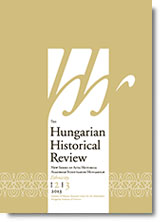Hungarian National Minority Organizations and the Role of Elites between the Two World Wars
Hungarian National Minority Organizations and the Role of Elites between the Two World Wars
Author(s): László SzarkaSubject(s): History
Published by: Magyar Tudományos Akadémia Bölcsészettudományi Kutatóközpont Történettudományi Intézet
Summary/Abstract: This article examines the history of the Hungarian minorities formed in three multiethnic nation states between the two world wars: the Czechoslovak Republic, the Kingdom of Serbia, Croatia and Slovenia and the Kingdom of Romania. The analysis focuses on options for political organization and the role of ethnic parties and political elites, highlighting the example of János Esterházy and his work as chairman of the Czechoslovakian Hungarian ethnic party. It specifically discusses Hungary’s “kin-state” relations with the minorities and its revisionist foreign policy. It also shows the key role of assimilation policy in the ethno-political model of the three nation states. In these twenty short years, the separate interests of the three Hungarian minority groups, as distinct from the kin state and the domicile states, emerged only at the conceptual level. The minority Hungarian ideologies which forged a program out of micro-community and multiethnic ideas—Romanian Transylvanism, “Upper Hungarian autochthonism” and “couleur locale” in (former) Southern Hungary—found no support from either Budapest or the governments of the three nation states.
Journal: The Hungarian historical review : new series of Acta Historica Academiae Scientiarum Hungaricae
- Issue Year: 2/2013
- Issue No: 3
- Page Range: 413-448
- Page Count: 36
- Language: English

